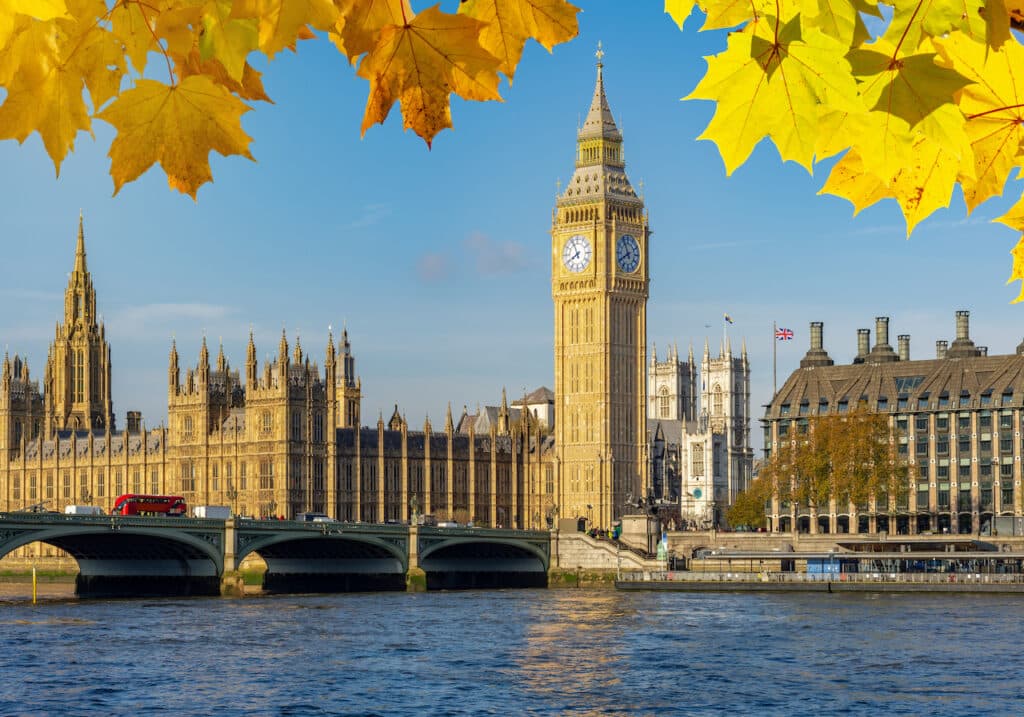Peru offers a rich cultural experience, affordable living, and diverse landscapes, making it an attractive destination for many Americans. However, understanding the nuances of life in Peru is essential for a smooth transition. This guide covers key aspects such as residency, taxation, healthcare, and cultural integration to help Americans living in Peru navigate their new environment effectively.
Snapshot of expat life in Peru
- Primary tax forms: Formulario Virtual 705 (Annual Income Tax Return)
- Tax year: Calendar year (January 1 to December 31)
- Tax deadline: March or early April, with the specific date set by SUNAT and based on the taxpayer’s RUC
- Currency: Peruvian Sol (PEN)
- Population: Approximately 33 million
- Number of Americans living in Peru: Estimated around 10,000
- Capital city: Lima
- Primary language: Spanish
- Tax treaty: No tax treaty between the U.S. and Peru
- Totalization agreement: No totalization agreement between the U.S. and Peru
By understanding these key aspects, Americans living in Peru can better navigate their new environment and enjoy all that the country has to offer.
Americans living in Peru: Visa types
For U.S. citizens seeking permanent residency in Peru, several visa options are available. Below are the primary visa types, each tailored to different circumstances:
Rentista Visa (Person of Independent Means)
Who it’s for: Retirees or individuals with a stable passive income from outside Peru.
Overview: This visa grants indefinite residency to those who can demonstrate a permanent monthly income from foreign sources. Holders are not permitted to work in Peru but can enjoy various benefits, including tax exemptions on certain imports.
Requirements:
- Proof of a stable monthly income of at least $1,000 USD from a foreign source.
- An additional $500 USD per month for each dependent.
- Commitment to transfer the income to a Peruvian bank account.
- Valid passport.
- Clean criminal record.
Investor Visa
Who it’s for: Individuals intending to invest in a Peruvian business.
Overview: This visa is designed for those who plan to make a significant investment in Peru, contributing to the local economy and creating employment opportunities.
Requirements:
- Minimum investment of 500,000 Peruvian soles (approximately $130,000 USD) in a Peruvian company.
- Creation of at least five local jobs.
- Business plan certified by a local economist.
- Valid passport.
- Clean criminal record.
Work Visa
Who it’s for: Individuals with a job offer from a Peruvian company or those establishing their own business in Peru.
Overview: This visa allows legal employment in Peru and is initially valid for one year, with the possibility of renewal.
Requirements:
- Signed employment contract with a Peruvian company, notarized and approved by the Peruvian Ministry of Labor.
- Employer’s business registration documents.
- Proof of professional qualifications, if required.
- Valid passport.
- Clean criminal record.
Family Reunification Visa
Who it’s for: Individuals with family ties to Peruvian citizens or residents.
Overview: This visa is intended for those who have immediate family members in Peru and wish to join them.
Requirements:
- Proof of relationship (e.g., marriage certificate, birth certificate).
- Proof of financial means to support oneself in Peru.
- Valid passport.
- Clean criminal record.
Each of these visas provides a pathway to permanent residency in Peru, catering to different personal and professional circumstances. It’s essential to assess which option aligns best with your situation and to prepare the necessary documentation accordingly.
How to apply for a Peruvian visa as a U.S. citizen
Applying for a Peruvian visa as an American involves several straightforward steps. Here’s what you need to do:
1. Choose the right visa type
Decide which visa matches your situation—Rentista (retiree), Investor, Work, or Family Reunification. Review the eligibility requirements for your chosen visa before starting.
2. Gather your documents
You’ll typically need:
- A valid U.S. passport
- Proof of income, employment, investment, or family relationship (depending on visa)
- Clean criminal record certificate
- Passport-sized photos
- Completed visa application form
Check if any documents need to be notarized, apostilled, or translated into Spanish.
3. Submit your application
Submit your application and documents to the nearest Peruvian consulate in the U.S. or, if you’re already in Peru, to Migraciones (Peru’s immigration office). Some visas allow for online pre-registration.
4. Pay the application fee
Pay the required fee—amounts can vary by visa type. Keep your receipt for your records.
5. Attend an interview (if required)
Some applicants may be asked to attend an interview or provide biometrics at the consulate or immigration office.
6. Wait for a decision
Processing times vary, but you’ll be notified when your visa is approved or if additional information is needed.
Once your visa is granted, you can enter Peru and begin the process of obtaining your resident ID (carné de extranjería).
Healthcare options for Americans living in Peru
Navigating healthcare in Peru as an American expat can feel a bit overwhelming at first, but with the right information, you’ll feel more prepared and confident in making the best choice for your needs. Here’s what you should know:
How the Peruvian healthcare system works
Peru’s healthcare system is a mix of public and private providers:
- Public healthcare is mainly delivered through EsSalud (social security) for those formally employed or paying into the system, and the Ministry of Health (MINSA) for the broader population, including lower-income residents.
- Private healthcare is available through clinics and hospitals, offering faster service, English-speaking staff in some locations, and a wider range of treatment options, though at a higher out-of-pocket cost.
- Urban areas like Lima tend to have more advanced facilities, while rural areas may have limited access and resources.
Healthcare options for Americans living in Peru
As an American in Peru, you have a few main routes for healthcare:
- Public health insurance (EsSalud/MINSA): If you have residency and employment in Peru, you may be eligible for EsSalud. Access to MINSA is more limited for expats and may require additional paperwork.
- Private health insurance: Many expats choose private insurance, which can be purchased locally or through international providers. This covers care at private clinics and hospitals.
- Out-of-pocket payments: Healthcare costs in Peru are generally lower than in the U.S., so some expats pay directly for services, especially for routine care.
- International health insurance: If you travel often or want coverage beyond Peru, international plans can offer more flexibility and access to higher-end facilities.
Pros and cons of healthcare for American expats living in Peru
Pros:
- Lower costs for most medical services and prescriptions compared to the U.S.
- Access to high-quality care in major cities.
- Shorter wait times in private clinics and hospitals.
- Ability to choose from a range of insurance plans.
Cons:
- The public system can have long wait times and limited English-speaking staff.
- Standards and resources may vary outside of major cities.
- Private care, while still affordable by U.S. standards, can be expensive without insurance.
- Navigating paperwork and eligibility for public options can be tricky for new arrivals.
Weighing these options can help you find the right balance between cost, access, and quality for your life in Peru.
Cost of living for American expats living in Peru
Adjusting to the cost of living in Peru can be a pleasant surprise for many American expats. Day-to-day expenses are typically much lower than what we’re used to back home, though there are some trade-offs, especially when it comes to imported goods and certain services. Here’s a breakdown to help you see how Peru stacks up against the U.S. in key areas:
| Category | Average in Peru (USD) | Average in U.S. (USD) | Notes/Comparison |
| Groceries | $150–$250/month | $350–$550/month | Local produce, meats, and staples are much cheaper in Peru. Imported goods cost more. |
| Housing | $400–$900/month (1-bed apartment in Lima) | $1,200–$2,000/month (1-bed apartment in city center) | Housing is significantly more affordable, especially outside Lima’s upscale districts. |
| Transport | $0.50–$1.00 (bus fare); $300–$400/month (car expenses) | $2.00–$3.00 (bus fare); $600–$900/month (car expenses) | Public transport is widely used and inexpensive. Taxis and ride-shares are also affordable. |
| Phone plans | $10–$20/month (prepaid); $25–$40/month (postpaid) | $35–$70/month (postpaid) | Good 4G coverage in cities; data is affordable, but coverage can drop in rural areas. |
Pros
- Lower overall cost of living—your money goes further, especially for essentials like food, rent, and transport.
- Affordable domestic help and services—it’s common (and reasonably priced) to hire help for cleaning, childcare, or cooking.
- Accessible public transport—no need to own a car in most cities.
- Opportunity for a higher quality of life on a moderate budget.
Cons
- Wages and local incomes are lower—if you plan to work locally, salaries may not match U.S. levels.
- Imported goods and U.S.-style products can be pricey or hard to find.
- Housing standards and amenities—while affordable, apartments may be smaller or less modern than those in the U.S.
- Variable infrastructure—internet speeds, utilities, and phone networks can be inconsistent outside major cities.
- Cultural and language adjustment—everyday tasks like shopping or banking can take longer until you’re comfortable with Spanish and local systems.
This overview should give you a clearer sense of what to expect, helping you plan your budget and lifestyle as you settle into life in Peru.
Where do American expats tend to live in Peru?
You’ll meet fellow Americans throughout Peru, but a few places consistently attract larger expat communities:
- Lima: As Peru’s capital and largest city, Lima is home to the biggest American expat population. Popular neighborhoods like Miraflores, San Isidro, and Barranco offer modern amenities, international schools, and a lively food scene.
- Cusco: Known for its rich history and proximity to Machu Picchu, Cusco appeals to those drawn to culture, adventure, and a slower pace. The expat community here is tight-knit, with many involved in tourism or volunteer work.
- Arequipa: Peru’s second-largest city offers beautiful colonial architecture, a mild climate, and a more relaxed atmosphere than Lima. The cost of living is also lower, making it attractive for retirees and remote workers.
- Sacred Valley towns (like Pisac and Urubamba): These smaller towns outside Cusco attract Americans seeking a quieter, community-focused lifestyle. Many are involved in wellness, arts, or eco-tourism, and enjoy the stunning natural surroundings.
Tax implications for Americans living in Peru
Navigating taxes as an American living in Peru can feel overwhelming, but understanding your obligations—both to the IRS back home and the Peruvian tax authorities—helps you avoid surprises and stay compliant. Let’s break down what you need to know, so you can focus on enjoying your new life in Peru with confidence.
American expat tax obligations
The United States is one of the few countries that taxes based on citizenship, not just residency. This means you still have to file taxes with the IRS even while living abroad. Here’s a closer look at the main areas that matter most for Americans in Peru:
Filing U.S. tax returns
Even as an expat, you’re still required to file an annual U.S. federal tax return if your income meets the standard filing thresholds. This includes:
- Worldwide income: The IRS wants to know about all your income, whether it’s from a job in Lima, rental property in Cusco, or investments back in the States.
- Deadlines: You get an automatic two-month extension (to June 15) if you’re living abroad, but any tax owed is still due by April 15 to avoid interest.
- State taxes: Double-check if your last state of residence requires a return—some are aggressive about taxing expats.
Peruvian taxes
If you’re considered a tax resident in Peru, you’ll also need to file a Peruvian tax return. Here’s what to know:
- Tax residency: You’re generally a Peruvian tax resident if you spend more than 183 days in a year in Peru.
- Taxed on worldwide income: Once resident, Peru taxes you on income from all sources, not just what you earn locally.
- Tax rates: Peru uses progressive tax rates up to 30% for individuals.
- Tax year: Runs January 1 to December 31, aligning with the U.S.
Foreign Earned Income Exclusion (FEIE)
The Foreign Earned Income Exclusion is a powerful tool for Americans abroad:
- What it does: Lets you exclude up to $130,000 (for 2025; this adjusts yearly) of foreign earned income from your U.S. taxable income.
- Eligibility: You must meet either the Physical Presence Test (330 days in a foreign country in a 12-month period) or the Bona Fide Residence Test (living in Peru for a full calendar year with no intention to return to the U.S. soon).
- Limits: Only applies to earned income (like wages or self-employment), not passive income (like dividends or rental income).
Foreign Tax Credit (FTC)
If you’re paying taxes to Peru on your income, the U.S. offers the Foreign Tax Credit to help avoid being taxed twice:
- How it works: You can claim a dollar-for-dollar credit for income taxes paid to Peru, reducing your U.S. tax bill.
- Which is better? Sometimes the FEIE is more beneficial, sometimes the FTC, or sometimes a mix of both. We can help you strategize the best approach for your situation.
Tax treaty
The U.S. and Peru do not have a comprehensive tax treaty. What does this mean for you?
- No double-taxation protections: You can’t rely on a treaty to automatically prevent being taxed twice on the same income.
- Social security agreement: There’s also no totalization agreement to coordinate social security taxes, so you may face double contributions if you’re employed.
Reporting foreign bank accounts (FBAR and FATCA)
If you have money in Peruvian banks or other financial institutions, you may have to report these accounts to the U.S.:
- FBAR (FinCEN 114): If the combined value of all your foreign accounts exceeds $10,000 at any point in the year, you must file an FBAR.
- FATCA (Form 8938): Stricter thresholds—usually $200,000 for single filers living abroad—but reporting requirements are broader.
- Penalties: Failing to file can result in steep fines, even if the omission was accidental.
Social Security
Your work situation in Peru affects how and where you pay social security:
- Working for a U.S. employer: You’ll likely keep paying into U.S. social security.
- Working for a Peruvian employer or self-employed: You’ll pay into the Peruvian system, and since there’s no totalization agreement between the U.S. and Peru, you could end up contributing to both systems without the ability to combine credits for future benefits.
- Receiving benefits abroad: U.S. social security benefits can generally be received in Peru, but you may have to navigate local banking regulations or currency conversion.
Understanding these tax issues is key to a smoother, less stressful expat experience in Peru. If you need tailored advice, we’re always here to help you make sense of your specific situation.
Frequently Asked Questions
-
Do Americans living in Peru still have to file U.S. taxes?
Yes, even if you’re living in Peru full-time, you’re still required to file a U.S. tax return each year as an American citizen. The IRS expects you to report your worldwide income, including any salary, investments, or rental income you earn while living abroad. Missing out on this requirement can lead to penalties, so it’s important to stay on top of your U.S. tax obligations while residing in Peru.
-
What are the tax residency rules for Americans living in Peru?
If you spend more than 183 days in Peru within a calendar year, you’re generally considered a tax resident by Peruvian authorities. As a tax resident, you’ll be taxed on your global income in Peru, not just what you earn locally. Keep this in mind when planning your stay, as it can impact both your U.S. and Peruvian tax filings.
-
Can Americans living in Peru avoid double taxation?
While there’s no tax treaty between the U.S. and Peru, Americans living in Peru can often avoid double taxation by using the Foreign Earned Income Exclusion (FEIE) or claiming the Foreign Tax Credit (FTC) on their U.S. tax return. These options help offset or exclude income that’s already taxed in Peru, but choosing the right strategy depends on your specific financial situation.
-
Are Americans in Peru required to report foreign bank accounts?
Yes, if you’re an American living in Peru with more than $10,000 combined in foreign bank accounts at any point during the year, you must file an FBAR (Foreign Bank Account Report). Additionally, larger accounts or certain assets may trigger FATCA (Form 8938) reporting. These rules are in place to promote financial transparency for Americans abroad, and failing to report can result in significant fines.
-
How does social security work for Americans working in Peru?
If you’re working for a Peruvian company or are self-employed in Peru, you’ll pay into the Peruvian social security system. Since there’s no totalization agreement between the U.S. and Peru, your social security contributions in Peru and the U.S. remain separate, and you generally can’t combine credits for benefits later. If you work remotely for a U.S. employer while living in Peru, you may continue to pay U.S. social security taxes.

 Connect on LinkedIn
Connect on LinkedIn

